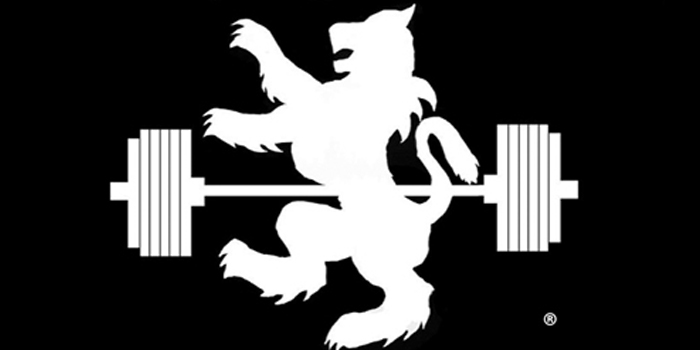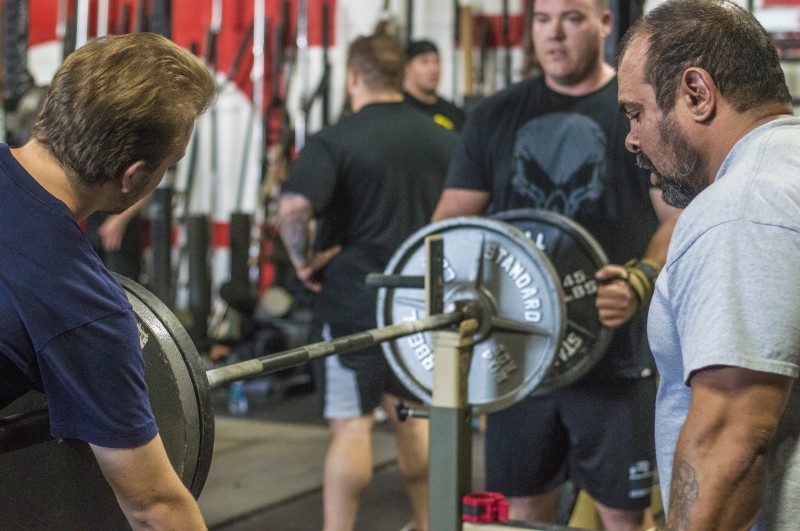
You're a detrained powerlifter on the front or backend of middle-aged. Let's say, your employment demands during the most recent two calendar quarters didn't allow the required training time. Unfortunately, rather than adopting a "train to maintain" philosophy, you persuaded yourself to take some time off from the gym and that you would pick up training after the deal closed or after the house was built or after you landed the next client. Let's say, alternatively you went through a bad breakup or a divorce, and the ordeal's mental toll kept you out of the gym and, sadly, away from what could have been your solace.
Here are some simple tips to get you back on track.
1. Physically Get into the Gym
It's the first step. It sounds like an oversimplification, and it is, but through personal experience, I've found that it works. One of the primary keys to success is showing up. Just show up, grab the bar and/or bands, and good things will happen.
It's a matter of inertia. I do most of my training in the evening in my garage gym. Five years ago, I used to utilize several training partners, but these days I prefer to train alone—just me and the collegiate power racks. I've found in the evening, when I arrive home after work, no matter how tired I feel if I'm able to drag myself into the gym and begin training right away, everything typically goes well. I somehow conjure a second wind. However, if I sit on the couch, even for a few minutes, I lose all my momentum, and I'm out of the money.
2. Get the Blood Flowing—Warm Up
In 2010, I wrote my first article for EliteFTS. It was entitled The Value of Warming Up. I remember my peers gave me a lot of flack for the chosen topic. They were expecting me to write something a little more "hardcore," but I thought it was an important issue then and I continue to see its relevance. At the time, I was concerned with the dynamic warmup habits of my young trainees (or lack thereof). However, the benefits of properly warming up apply to all training ages.
The benefits include an increase in muscle temperature, which translates to muscle that contracts more forcefully (enhancing speed and strength). Warming up also facilitates dilation of the blood vessels to enable more efficient delivery of blood to the muscles and organs. Of particular importance for an older lifter, warming up can also improve a joint's range of motion. It lubricates the joints.
3. The Spinal Roll (Rocking Exercise)
Piggybacking on the value of the warm up, I highly recommend spinal rolls. Apparently, the spinal roll is recognized as an essential yoga movement, but I remember it best from my Pop Warner Football days.
To perform the exercise, begin by sitting on the floor. Slowly draw your knees up toward my chest while bending my head down toward your knees. With a rounded spine, swing (roll) back and forth in a rocking motion.
I've felt the benefit of performing this simple exercise in my spinal flexibility. There is a massaging action on the spine, if not a slight traction effect. I try to increase my range of motion with each rock, and after my spine feels more loose and flexible, I'll try to extend my feet over my head and touch the floor with my toes. I used to be able to perform these with ease, but over the years I've lost flexibility and added girth, which makes the exercise more challenging.
4. Start Back Slowly
On a personal level, I find this to be the most difficult rule to follow. You don't need to get it all back in one training session. For the older lifter, the priority is to stay healthy. Like Jim Valvano, former head basketball coach at North Carolina State University used to say, "Survive and advance." Muscle has memory. Try and maintain realistic expectations, and it will come back faster than you think.
5. Do Not Completely Discount the Value of Circuit Training
As powerlifters, we've been taught that circuit training is taboo. You'll be better served if you can put some of those prejudices aside for now. When re-priming the pump after an extended layoff, it can be a useful tool, especially when time is short and especially when you've allowed yourself to become detrained.
I've recently employed light squats, chins, and 45 degree back raises in circuit fashion. I've also performed split squats, dips, and reverse hypers. There are hundreds of combinations that can be employed. I view these as opportunities to revive the CNS and prepare the body for more focused training in the longer term.
6. Try Different Movements—Focus on Weak Points
I especially like this tip for the older trainee, who aside from being detrained is also really beat up. My shoulders have seen better days, so I'm not able to bench the way I used to (and I'm not sure it's ever coming back), but for some reason, my shoulders can handle dips really well. I used to perform dips from time to time, but now they've become a staple in my training out of necessity.
If you're really hurting, you can try something different like specific grip work or even band work (e.g., face pulls, band pull-aparts, and shoulder rotations).
7. Use Your Favorite Movements
Training your weak points is always a solid strategy, but if you're trying to rekindle the fires of your motivation, perhaps sticking with some of your favorites, for the near term is the best course of action. We're talking about cultivating motivation, so utilize the method that works best for you. Above all else, don't forget tip number 4—slow and steady wins the race.
Hopefully one or several of these seven tips will resonate with you. Surely, one or more can serve as a catalyst to facilitate getting your own training back on track. When in doubt, try and summon the will to walk into the facility of your choosing. Inevitably, the inertia will carry-over, and good things will start happening for you once again.












1 Comment